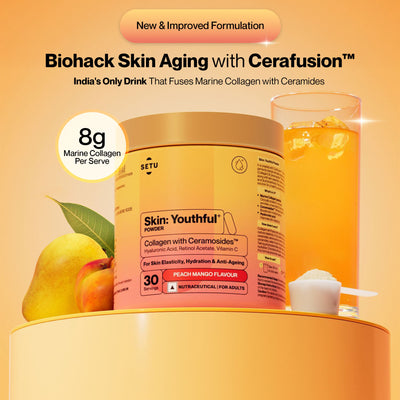Struggling With Food Allergies? Read This!
24 Mar 2023
Food allergies may have been rare in the past, but in recent times, with our changing lifestyles and food habits, food allergies are on the rise. A survey conducted in a single state in the country showed that more than 26% of the population had food allergies.
At present, there is no cure for allergies, except avoiding the foods that you are allergic to. However, some useful tips can potentially prevent symptoms of allergic reactions. You should also keep away from food allergens and learn to quickly manage food allergies when they occur.
Tips To Prevent Symptoms of Food Allergies
Allergies are immune responses set off and histamines, i.e., inflammatory mediators produced to fight what it assumes is an attack on the body. Most people confuse intolerance with allergy. Allergy is an immune response whereas intolerance is not an immune response.
Intolerance is when there is a lack of enzymes in your digestive system to break down a particular food. For instance, if you are lactose intolerant, you can have some amount of milk or milk products. When you have the same food in large quantities it can create problems.
In the case of food allergies, abnormal response is triggered for a particular food and manifests in the form of sneezing, nasal congestion, or anaphylaxis. Anaphylaxis is an immune response that sends the body into a state of shock by impairing breathing.
Here are a few tips to prevent food allergies
Avoid Common Causes of Allergies –– Cross-Contact & Cross-Reactivity
Avoiding Cross-Contact
Cross-contact between allergic and non-allergic foods happens inadvertently sometimes. You might replace allergic food with non-allergic food from a recipe to give it a different name and look. This will be a direct contact. In the case of indirect contact, you will be using the same vessel to prepare both non-allergic food and allergic food without cleaning the utensil after one preparation.
Follow these simple steps to avoid cross-contact and stay away from food allergies:
- Maintain a separate cooking area, if you’re sharing your kitchen.
- Clean all your vessels, cooking apparatus’, stove tops, and cooking platforms thoroughly with cleaning liquids.
- Get rid of all the food items that you’re allergic to.
- Wash your hands thoroughly if you have handled food allergens.
- If you are cooking a variety of foods, then cook non-allergic foods first.
- Cover non-allergic foods to avoid cross-contact with allergic foods.
- Clean the cooking counter thoroughly after cooking every meal.
- Do not share food
Avoiding Cross-Reactivity
When proteins in two different foods are similar, your immune system is unable to differentiate between them and may set off an immune response. This results in an allergic reaction, triggered by cross-reactivity. People generally avoid eating any item from the same food group when allergic to any one food type in a food group. For example, if you’re allergic to cheese, you can avoid eating all dairy products.
If you want to try food from the same food group you’re allergic to, take an allergy test or food intolerance test before consumption.
Examine Food Labels For Allergens
Reading the food label is a precaution to keep away from food allergens to people who are prone to food allergies. But the food labels confuse the consumer which may make them more susceptible to food allergies. If the labels say ‘ may contain’ or ‘manufactured on shared equipment’, it is worth keeping away from such products to avoid allergic reactions.
Understand Allergy Symptoms
If you have food allergies, it is imperative to have awareness of the symptoms that follow. You will be able to react immediately to these symptoms, especially, anaphylaxis, and prevent serious eventualities. Some of the allergic reactions relating to various parts of the body are:
|
Body Part |
Symptoms |
|
Eyes |
Redness, swelling around the eyes, tears, and itching |
|
Skin |
Hives, swelling under the skin, rashes, itching, red bumps, and redness |
|
Gastrointestinal |
Bloody Stool, nausea, vomiting , diarrhoea, stomach ache, and reflux |
|
Upper Respiratory Organ |
Nasal congestion, dry cough, sneezing, runny nose, and itching |
|
Lower Respiratory Organ |
Wheezing, shortness of breath, tightness in the chest, and cough |
|
Mouth |
Swelling of plate, lips, or tongue, and itching |
|
Cardiovascular |
Low blood pressure, dizziness, slow or fast heartbeat, and unconsciousness |
|
Other organs |
Uterine contractions |
Analysing anaphylactic symptoms can be a challenge. If any of the following symptoms occur immediately or hours after consumption or coming in contact with food allergens, it might be an indication of anaphylactic symptoms and has to be treated without delay.
- Allergic reactions pertaining to skin, gastrointestinal, mouth, shortness of breath, unconsciousness, and drop in blood pressure.
- Hives, drop in blood pressure, abdominal cramps, shortness of breath, vomiting, swelling of lips or tongue. Any two symptoms that happen together.
- Fainting due to decline in blood pressure levels.
An anaphylactic reaction can either be a single reaction that gets better with or without treatment or reactions that appear between 8 and 72 hours and last for 2 to 3 days. An intramuscular injection of epinephrine can help.
Arm Yourself With Knowledge Regarding Emergency First Aid
If you have life-threatening food allergies, carry an epinephrine shot to help your body during an emergency. The allergic reactions will be counteracted with the shot, until you can get medical help.
List of Allergenic Foods
The only way to prevent symptoms of allergies is to keep away from the food that you are allergic to. Some of the common allergenic foods are:
- Eggs
- Milk
- Soybean
- Crustacean Shellfish
- Fish
- Wheat
- Tree nuts
Treatment Options for Allergic Reactions
Some of the treatment options for food allergies are:
- Medication: there are various medications available to treat allergic reactions. Your doctor will prescribe the medicine depending on the severity of your allergy. For
- Immunotherapy: Under this option, several injections will be given over a period and your body will grow accustomed to your allergy and will prevent the recurrence of the symptoms.
- Natural remedies: Several supplements as well as natural remedies for allergies are available. Consult your doctor before trying any of them.
Conclusion
Food allergies are common these days due to unhealthy lifestyles. Although there is no cure for allergies, there are precautionary measures that can prevent allergic symptoms. Follow the tips given in the article and also be aware of the foods that you are allergic to and keep food allergies at bay.
FAQs
What is the most common food allergy?
Peanut allergy is the most common food allergy which can sometimes turn fatal too.
What are the different types of allergic reactions?
The four different types of allergic reactions are:
- Cytotoxic
- Anaphylactic
- Immunocomplex
- Cell-mediated
These reactions are triggered in various ways and manifestation differs from person to person.
Can allergies occur all of a sudden?
Hormonal changes can trigger allergies, especially in women. Allergies can develop during pregnancy, menopause or puberty.
What are the stages of allergic reactions?
When the immune response sets in, antibodies move to cells where histamine and other chemical mediators are released, resulting in allergy symptoms. Sensitization, "early phase," and "late phase" are the three stages that the human body goes through during an allergic reaction.
Are there any tests for allergic reactions?
A skin prick test or scratch test checks allergic reactions for over 50 different allergens. It is generally done to spot pollen, dust mites, mould, foods, and pet dander allergies.
Skin: Renew - Glutathione - Orange Flavour
- ₹1,794
- ₹1,794
-
₹2,600 - ( 31% OFF)
Categories
- Choosing a selection results in a full page refresh.
- Press the space key then arrow keys to make a selection.
this is the sidecart










